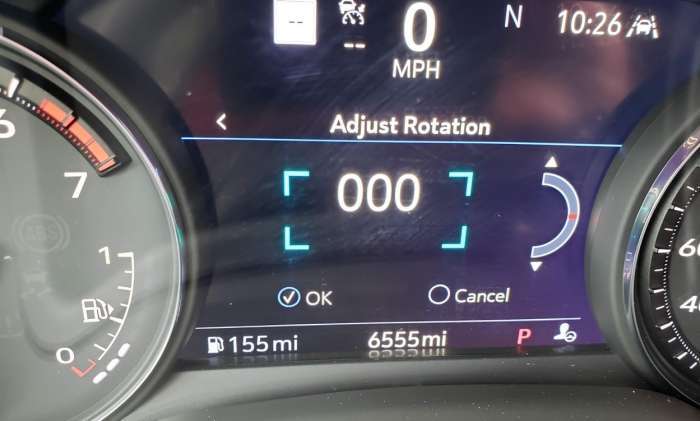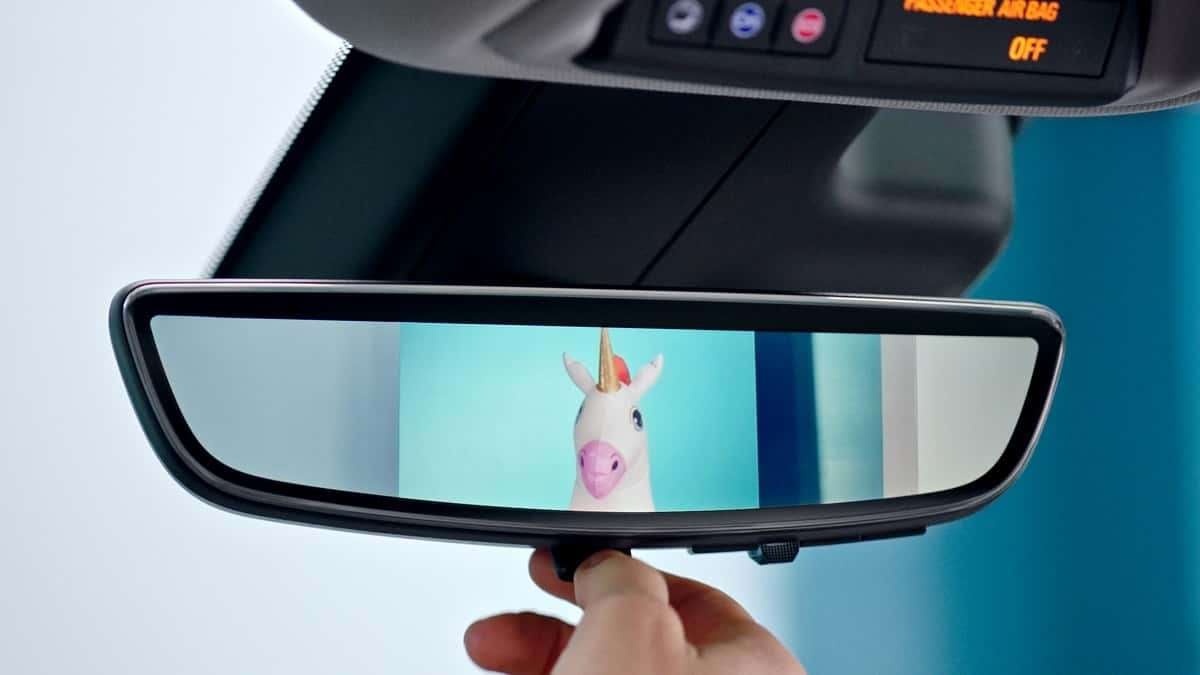High definition rear vision cameras are becoming more and more commonplace in modern vehicles. We've now tested them in a number of brands, most of them made by General Motors. We love the HD rear vision cameras and find them helpful and easy to operate. In addition, head-up displays are also becoming common. In this story and video, we will explain the adjustment options for these new infotainment and safety systems.
HD Rear Vision Camera Adjustments
Adjusting a rear vision camera is simple and easy. The first thing to know is that you can toggle the view from HD camera to optical reflection mirror (old-style mirror) using the little dimming tab you know from older vehicles. Next, you can adjust three other things, including the brightness, the magnification, and the tilt of the view. These are all adjusted using one button to access the menus and a plus and minus button. Check out our video for more details on how to adjust the rear vision camera.
 Head-Up Display Adjustments
Head-Up Display Adjustments
Head-up displays (HUDs) allow you to see helpful and important vehicle information like speed, tachometer, and navigation instructions without looking away from the road ahead. In addition, many systems add audio info, speed limit changes, and driver-assist system status. The first thing to know about HUDs is that they allow you to pick and choose what you see. Are you convinced that everything in your new car is a distraction? Shut off the system entirely, or just what you feel is distracting you.
In the example of our Cadillac CT5 test vehicle, the HUD has two locations from which one can adjust the system. The first is a set of three buttons one can use without looking. They adjust the HUD height off of the hood, the brightness, and the information options. Our video shows you how to use these simple to operate selector switches. The next HUD menu option is one you won't use often, so GM placed it in the in-dash display menu tree. In systems, the HUD can be adjusted for angle. You can rotate the HUD display from a flat 180-degree view to slightly off-center to the left or right. This is for drivers who don't sit perfectly straight and want to view to tilt a bit.
Cars are becoming less and less distracting, and the information and views around the vehicle easier to use due to better technology. Be sure you take a moment to make them suit your tastes. And if you are not a fan of them, they can be shut off with a quick menu selection.
John Goreham is a long-time New England Motor Press Association member and recovering engineer. Following his engineering program, John also completed a marketing program at Northeastern University and worked with automotive component manufacturers. In addition to Torque News, John's work has appeared in print in dozens of American newspapers and he provides reviews to many vehicle shopping sites. You can follow John on Twitter, and view his credentials at Linkedin
Top of page image courtesy of GM.





